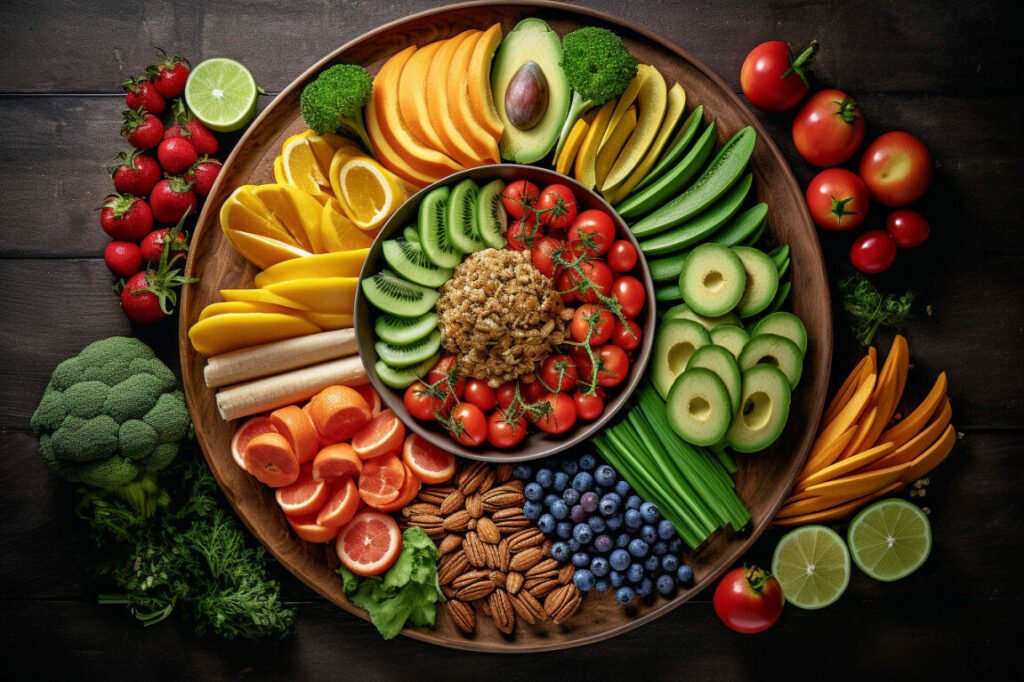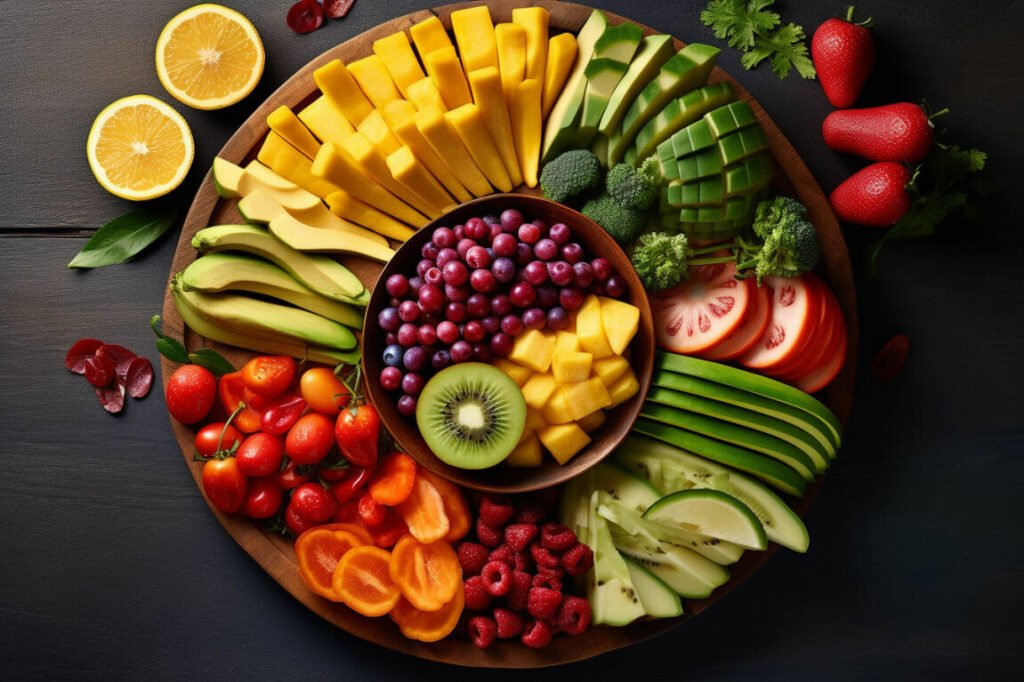How To Create A Healthy Meal Plan
Are you tired of feeling sluggish and unhealthy? Do you want to make a change in your diet but don’t know where to start? Creating a healthy meal plan is a great way to improve your overall health and well-being.
By planning your meals ahead of time, you can ensure that you are getting the nutrients your body needs to function at its best.
Assessing your nutritional needs is the first step in creating a healthy meal plan. This involves taking a look at your current diet and identifying areas where you may be lacking in certain nutrients.
Once you have a better understanding of your nutritional needs, you can start planning your meals accordingly. With a little bit of preparation and some healthy recipe ideas, you can create a meal plan that is both delicious and nutritious.
So, let’s get started on your journey to a healthier you!
Assess Your Nutritional Needs
Before you start figuring out what to eat, take a minute to assess what your body really needs. This means considering your dietary restrictions, if any, and consulting a nutritionist if necessary.
It’s important to take an inventory of the nutrients you may be lacking or overconsuming so that you can tailor your meal plan accordingly. If you have any dietary restrictions, such as being lactose intolerant or having celiac disease, it’s important to take those into account when planning your meals.
For example, if you’re lactose intolerant, you’ll need to look for alternative sources of calcium to ensure that you’re getting enough of this important nutrient. Similarly, if you have celiac disease, you’ll need to avoid gluten-containing foods and make sure you’re getting enough fiber from other sources.
Consulting a nutritionist can also be helpful, especially if you have specific health concerns or goals. A nutritionist can help you identify any nutrient deficiencies or excesses, and work with you to create a meal plan that meets your individual needs. They can also guide portion sizes, meal timing, and other factors that can impact your overall health and well-being.
By taking the time to assess your nutritional needs, you can create a healthy meal plan that supports your body’s unique requirements. Whether you have dietary restrictions or just want to ensure that you’re getting all the nutrients you need, a personalized approach to meal planning can help you achieve your health goals and feel your best.
Plan Your Meals
When planning your meals, it’s important to choose a healthy balance of foods that provide the necessary nutrients for your body. This means incorporating a variety of food groups, including lean proteins, whole grains, and healthy fats.
Don’t forget to also incorporate plenty of fruits and vegetables, which provide essential vitamins and minerals. Additionally, planning for healthy snacks can help you stay on track and avoid making impulsive, unhealthy choices.

By prioritizing these key points, you can create a well-rounded and nutritious meal plan that supports your overall health and wellness.
Choose a Healthy Balance of Foods
To make sure you’re getting a good mix of nutrients, aim to fill half your plate with colorful vegetables, a quarter with lean protein, and the other quarter with whole grains or complex carbs.
When it comes to choosing healthy protein sources, opt for lean meats like chicken, turkey, or fish. Vegetarian options like lentils, beans, and tofu are also great choices.
Choosing whole grains over refined carbs is another important aspect of creating a healthy meal plan. Whole grains are packed with fiber, which helps you feel full and satisfied for longer periods. They also provide essential nutrients like B vitamins and iron.
Some examples of whole grains include brown rice, quinoa, and whole wheat bread. By balancing your plate with these types of foods, you’ll be on your way to creating a healthy and sustainable meal plan.
Incorporate Fruits and Vegetables
You can’t go wrong with adding an abundance of fruits and vegetables to your plate – they’re nature’s gift to our taste buds, bursting with flavors that will blow your mind!
Not only are they delicious, but they also provide essential vitamins, minerals, and fiber that are crucial for a healthy body. To ensure you’re getting enough fruits and veggies in your diet, try incorporating them into every meal.
Many creative recipes and meal prep hacks can help you add more variety to your meals. For breakfast, try adding spinach to your scrambled eggs or throwing some berries into your smoothie.
For lunch, top your salad with a variety of colorful veggies like bell peppers, carrots, and cucumbers. And for dinner, experiment with different vegetable stir-fries or roasted veggie medleys.
Don’t be afraid to try new things and explore different ways to incorporate fruits and vegetables into your meal plan. Your taste buds and body will thank you!

Plan for Healthy Snacks
Snacking smart can be just as enjoyable as indulging in your favorite treats, so don’t forget to stock up on wholesome options like crunchy carrot sticks, juicy apple slices, and creamy almond butter.
Healthy snack ideas are essential to keep you fueled throughout the day and prevent overeating during meals. When planning for healthy snacks, aim for a combination of protein, fiber, and healthy fats to keep you satisfied and energized.
The importance of snacking cannot be overstated. Snacking can help regulate blood sugar levels, prevent cravings, and boost metabolism. However, it’s important to choose snacks that are nutrient-dense and low in added sugars and unhealthy fats.
Some other healthy snack ideas include Greek yogurt with berries, hummus with whole-grain crackers, and roasted chickpeas.
With a little planning and preparation, you can easily incorporate healthy snacks into your meal plan and reap the benefits of a balanced diet.
Prep Your Ingredients
When it comes to meal prepping, there are three key points you need to keep in mind: batch cooking and prepping, portion control, and storage and labeling.
Batch cooking and prepping involves cooking larger quantities of ingredients and meals ahead of time, so you have healthy options readily available throughout the week.
Portion control is essential to ensure you’re not overeating, and this can be achieved by measuring and dividing your meals into appropriate portions.
Lastly, storage and labeling ensure that your prepped meals stay fresh and organized, making it easier for you to grab and go.
Batch Cooking and Prepping
To keep your diet on track, it’s like preparing for a marathon – you need to do the work upfront, and batch cooking and prepping can help you stay on track even on your busiest days. Here are some batch cooking tips and meal prep hacks to help you create healthy, flavorful meals in no time:
- Plan your meals: Before you start batch cooking, plan out your meals for the week. This will help you know exactly what ingredients you need and how much to cook. You can also prep your ingredients in advance, like chopping vegetables or marinating meats, so that you can easily assemble your meals when it’s time to eat.
- Invest in quality storage containers: Good storage containers are essential for batch cooking and meal prepping. Look for containers that are freezer-safe, microwave-safe, and leak-proof. Glass containers are a great option since they’re durable and easy to clean.
- Cook in bulk: Batch cooking means cooking large quantities of food at once. This can save you time and money since you can use leftovers for future meals. Cook grains like rice or quinoa, roast vegetables, and grill meats in bulk. You can also make large batches of sauces or dressings to use throughout the week.
With these batch cooking tips and meal prep hacks, you’ll be able to create healthy, delicious meals without spending too much time in the kitchen.
Portion Control
Now that you have learned about batch cooking and prepping, it’s time to talk about portion control. Even if you are eating healthy foods, consuming too much of them can still lead to weight gain. Portion control is all about balancing the amount of food you eat with your body’s energy needs. It’s a crucial aspect of creating a healthy meal plan that supports your overall health and wellness.
When it comes to portion control, plate sizes, and mindful eating are two important factors to consider. Using smaller plates can help you control your portion sizes, as it tricks your brain into thinking you are eating more than you actually are. Additionally, practicing mindful eating can help you become more aware of your hunger and fullness cues, so you can stop eating when you are satisfied, rather than overeating. To help you get started, here’s a table that outlines recommended portion sizes for different food groups, based on the USDA MyPlate guidelines:
| Food Group | Recommended Portion Size |
|---|---|
| Vegetables | 1 cup raw or cooked |
| Fruits | 1 medium piece or 1/2 cup chopped |
| Grains | 1/2 cup cooked |
| Protein | 3 oz cooked |
Remember, these are just general guidelines. Your individual portion sizes may vary depending on your age, gender, height, weight, and activity level. The key is to be mindful of how much you are eating and to listen to your body’s signals. By practicing portion control and mindful eating, you can create a healthy meal plan that supports your overall health and wellness.
Storage and Labeling
Let’s dive into the importance of proper storage and labeling for your food. Proper storage and labeling techniques are essential for maintaining food safety and extending the shelf life of your meals. Here are four important things to keep in mind when it comes to storing and labeling your food:
- Store your food in airtight containers to prevent contamination and spoilage. This will also help to keep your food fresh for longer periods.
- Label your containers with the date and contents of the food. This will help you keep track of what you have in your fridge or freezer and ensure that you use your food before it goes bad.
- Keep your fridge and freezer at the appropriate temperatures. The ideal temperature for a fridge is between 35-38°F, while the ideal temperature for a freezer is 0°F or below.
- Use the ‘first in, first out’ method when storing your food. This means that you should use the oldest food first and rotate your stock to ensure that nothing goes to waste.
By following these proper storage and labeling techniques, you can ensure that your food stays fresh and safe to eat for longer periods. Not only will this save you money, but it’ll also help you maintain a healthy meal plan by reducing the risk of foodborne illness.
Make Healthy Eating a Habit
You can’t build a strong house without a solid foundation, and the same goes for your health – making healthy eating a habit is the foundation for a strong and vibrant life. However, many people struggle to stick to a healthy meal plan because they find it difficult to break old habits and form new ones. Here are some tips and tricks to help you make healthy eating a habit and stick to it for the long term.
The first step to making healthy eating a habit is to build a support system. Surround yourself with people who have similar goals and are committed to living a healthy lifestyle. Join a fitness class or a healthy cooking club, or even just find a friend who you can work out with or share healthy recipes with. Having a support system can help you stay motivated and on track, and can also provide you with accountability when you need it.
In addition to building a support system, it’s important to set achievable goals and celebrate your successes along the way. Start small by incorporating one healthy habit into your routine, such as drinking more water or adding more vegetables to your meals. As you begin to see progress, you can slowly add more healthy habits and build upon your success. Remember to celebrate your successes, no matter how small they may seem – this will help you stay motivated and committed to your healthy meal plan.
| Tips for Making Healthy Eating a Habit | How to Stay Motivated |
|---|---|
| Start small with achievable goals | Surround yourself with a support system |
| Celebrate your successes | Keep a positive attitude |
| Plan ahead and prepare healthy meals in advance | Focus on the benefits of healthy eating |
| Keep a food journal to track your progress | Reward yourself for sticking to your meal plan |
Incorporating healthy eating habits into your lifestyle can seem daunting, but with the right mindset and support system, it can become second nature. By setting achievable goals, building a support system, and celebrating your successes, you’ll be well on your way to making healthy eating a lifelong habit. Remember to stay positive and focused on the benefits of healthy eating, and don’t forget to reward yourself along the way. Before you know it, making healthy choices will become a natural part of your daily routine.

Evaluate and Adjust
When evaluating and adjusting your meal plan, it’s important to monitor your progress regularly. This means keeping track of what you’re eating and how you’re feeling, so you can identify any areas where you may need to make changes.
Remember to be kind to yourself and not be too hard if you slip up or don’t reach your goals right away. Adjust your plan as needed to ensure that it’s sustainable and meets your individual needs.
Monitor Your Progress
Tracking your progress is crucial for staying on track and achieving your healthy meal plan goals. By monitoring your progress regularly, you can see how far you’ve come and adjust your plan accordingly. This will help keep you motivated and on track to achieving your goals.
There are several ways to monitor your progress when it comes to your healthy meal plan. One way is to keep a food diary or log where you track what you eat and drink each day. This can help you identify patterns in your eating habits, such as when you tend to snack or indulge in unhealthy foods.
You can also track your weight and body measurements to see if you are making progress toward your overall health goals. By regularly monitoring your progress and making adjustments as needed, you can stay motivated and on track to achieving your healthy meal plan goals.
Adjust Your Plan as Needed
It’s important to make necessary adjustments to ensure that your dietary choices align with your health objectives. The key to creating a sustainable meal plan is flexibility.
Recognizing limitations and adjusting your plan accordingly is a crucial component of achieving your health goals. For example, if you find that you’re not meeting your daily nutrient requirements, it’s important to adjust your meal plan to include more nutrient-dense foods. You may need to increase your intake of fruits, vegetables, lean protein, and whole grains to meet your nutritional needs.
Similarly, if you find that you’re not satisfied with your current meal plan, you may need to adjust your portion sizes to ensure that you’re consuming enough calories to fuel your body. The key is to be open to making changes and to recognize that your meal plan may need to be adjusted periodically to ensure that it’s aligned with your health objectives.
Don’t Be Too Hard on Yourself
Now that you know how to adjust your meal plan as needed, it’s important to remember to be kind to yourself. Creating and sticking to a healthy meal plan can be challenging, and it’s okay if you slip up or make mistakes along the way.
The key is to approach the process with mindfulness and self-compassion. Being kind to yourself means acknowledging that you’re only human and that it’s natural to experience setbacks and struggles. Instead of beating yourself up over a missed workout or a less-than-perfect meal, try to focus on the progress you’ve made and the positive changes you’re implementing in your life.
Remember that one slip-up doesn’t negate all the hard work you’ve put in and that every day is a new opportunity to make healthy choices. By cultivating a mindset of self-kindness and mindfulness, you’ll be better equipped to create a sustainable, healthy meal plan that supports your overall well-being.
Conclusion
Congratulations! You’re now equipped with the knowledge and tools needed to create a healthy meal plan.
By assessing your nutritional needs, planning your meals, prepping your ingredients, and making healthy eating a habit, you’re on your way to a healthier you.
Remember, creating a healthy meal plan is not a one-time task. It requires evaluation and adjustment to ensure that you’re meeting your nutritional needs and achieving your health goals.
As you continue on your journey to a healthier lifestyle, make sure to keep these tips in mind, and don’t be afraid to seek support and guidance from a healthcare professional.
By making small, sustainable changes to your eating habits, you can improve your overall health and well-being. So go ahead, give it a try, and watch as you transform into the best version of yourself.
Here’s to a healthier you!






